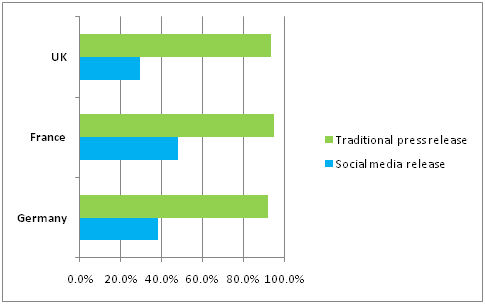Cision Media Research shows that over around one third of journalists use social media releases at least once a week. Paul Miller, head of digital at Cision UK, discusses the changing format of press releases.
Social media looked very different in 2006. Yes, there were a handful of social bookmarking sites, most prominently the adolescent geek dream Digg and the strangely punctuated del.icio.us. There was a video-sharing site run out of its creators’ garage that was on the brink of going supernova. And there was a networking site for date-starved Harvard students that was just starting to make a name for itself off-campus.
But it wouldn’t be too much of a stretch to suggest that, in 2006, blogging pretty much was social media. Everyone seemed to have one: Technorati claimed that there were somewhere in the region of 200 million blogs worldwide – although that number was massively downsized a couple of years later when the dedicated blog-search engine was called upon to justify its inventory in terms of active, non-spammy blogs.
It was in this context that one of the year’s top memes was “the death of the press release”. Traditional media was on the way out, it was claimed, and traditional means of communicating with the media would go with it. PR-Squared and Shift Media blogger Tod Defrens picked up the gauntlet with the development of the social media release (SMR). Or rather, in a nifty piece of self-promotion, he formalised existing ideas about making content more social and presented them in template form. In 2006, this meant appending Technorati, Digg and del.icio.us tabs to traditional press-release-type content, and adding some links to supporting content, including richer media such as video.
Five years on and the press release, like traditional media, has proved more resilient than many expected. For example, we provide the engine that communications PROs use to distribute thousands of press releases every single day. But these are evolved press releases: our platform, like those of other distribution companies, auto-creates an SMR experience whether the client knows it or not.
Looking at SMR formats today, Jon Bon Jovi’s immortal couplet comes to mind: “it's all the same, only the names will change“. Digg, Technorati and (for the moment, at least) a mercifully de-punctuated Delicious are still there, of course, but the press-release content now finds itself surrounded by a multicoloured plethora of other social media baubles, icons for platforms many of us will never have heard of and that few people outside of social media consultancy will ever use. As Tod Defrens anticipated, the key is in making content as rich, and as sharable, as possible.
Given the obdurate survival of much traditional media, how important is this? Well, for one thing, the SMR provides an experience that is stickier than the traditional release, and in a world where it’s more than possible for corporate communications to bypass traditional channels via, say, search or social networking, that can be vital. The best SMRs have more in common with a microsite than a traditional release, in that they exercise some level of control of the consumer’s journey around their content.
PRs communicate with journalists more than once a week using...

What’s more, it seems that traditional media are seeing more and more value in the SMR approach. The latest Cision survey of Western European journalists shows that around a third of them in this market are using SMRs at least once a week – some are using them far more often – and that’s not accounting for content created for such releases that have been accessed, in isolation, on individual social channels. Traditional media needs rich content for its digital properties as much as anybody, so providing journalists with easy access to images and videos is extremely valuable.
In 2006, most quarters of the traditional media probably weren’t ready for the SMR – and nor, really, was social media. Five years of development has seen both channels meet in the middle. The press release’s death is still much exaggerated though, having proved far more adaptable than its doubters ever would have credited.
MethodologyIn July 2010, Cision Media Research, linked with the University of Sunderland, completed an online survey in the UK, France and Germany simultaneously. The survey was designed to enhance the media industry’s understanding of social media uptake and the impact of social media technologies and processes on journalists’ work. Respondents were taken from Cision’s media database of more than 1.5 million influencers globally. Country-specific sub-panels were set up and 5,000 journalists per country were invited with a broad spread of work experience, media types as well as geographies.
PR Masterclass: The Intersection of PR and GEO
Join PRmoment for a Masterclass featuring 10 of the industry’s foremost experts. You will walk away with a clear, actionable strategy for adapting your content to an AI-first search environment.
Taking place on Wednesday 25th February in London, both virtual and in person tickets are available.
Early bird ticket sale ends Friday 9 January.
PR MasterclassIf you enjoyed this article, sign up for free to our twice weekly editorial alert.
We have six email alerts in total - covering ESG, internal comms, PR jobs and events. Enter your email address below to find out more:









